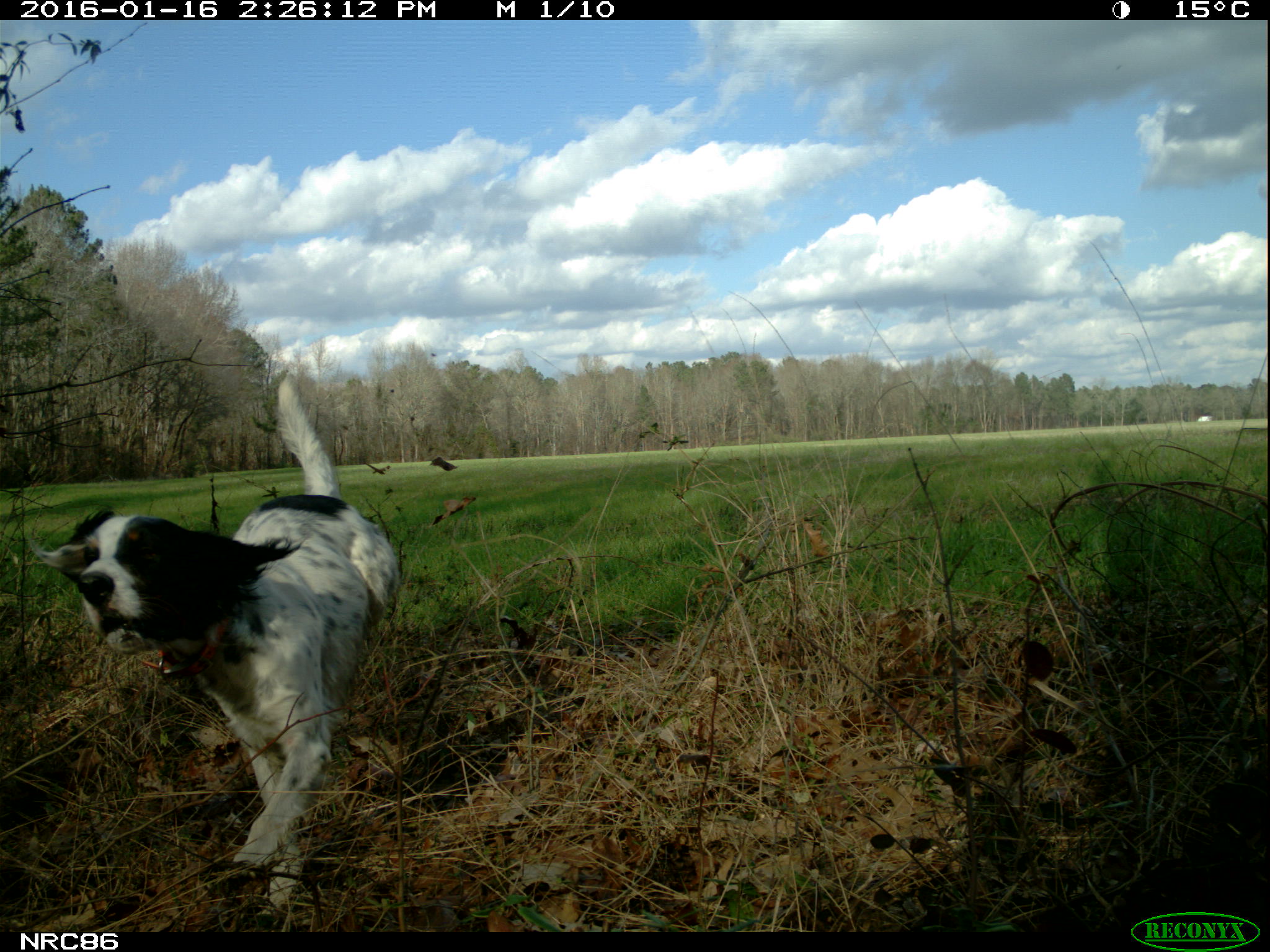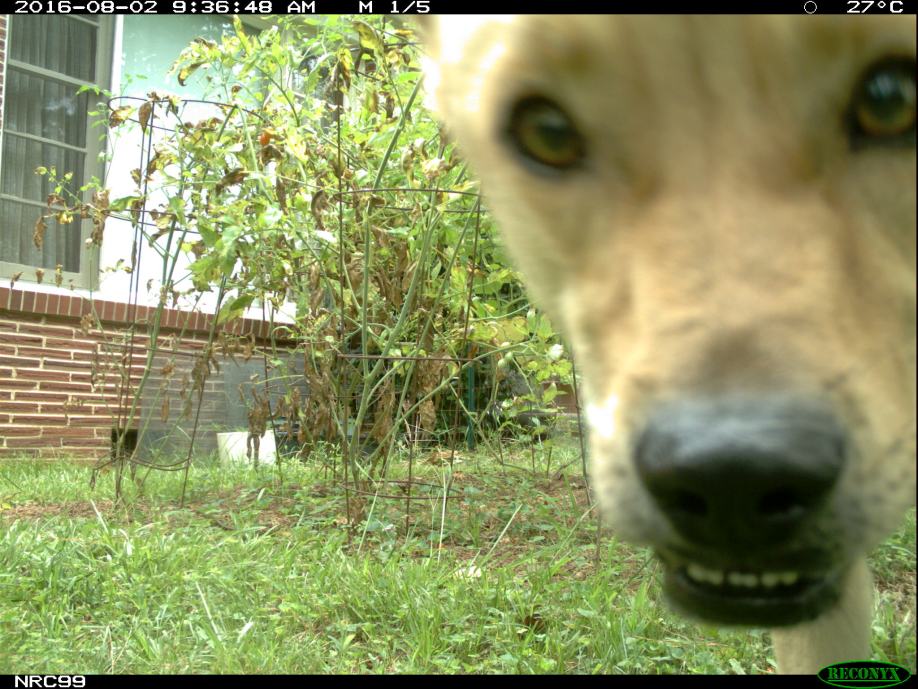*This post contains affiliate links. As an Amazon Associate, I earn from qualifying purchases.
Conservationists love to hate on cats because unfortunately they kill our feathered friends. The solution is easy (keep your cat indoors), but what about our other beloved pet, man’s best friend? You don’t hear much about the impacts of dogs on wildlife and dogs are a pet you have to let outside. How do dogs impact wildlife? Do they ever get the squirrel? Or just terrorize wildlife during walks?
During my dissertation field work in Lopé, National Park, Gabon, dogs were a real threat to wildlife. Lopé town borders the park entrance and when the village dog population gets large enough, they enter the park. Forming packs, the dogs chase and hunt wildlife, endangering the protected animals in the park.

Here in the US, I let my dogs out in a fenced yard. They are barkers and one day, they were going particularly crazy. I looked outside and I saw two deer just beyond the fence. Despite the incessant and intense barking, the deer were largely unphased and slowly meandered away. They seemed to know there was a fence, and no matter how ferociously my dogs were barking, they were not scared.
Like Gabon, the US has parks that protect wildlife, but unlike Gabon, a lot of these parks permit dogs. Human recreation (with and without dogs) is important for parks, generating revenue and allowing opportunities for people to create connections with nature, which in turn promotes pro-conservation attitudes. If free-ranging dogs in Gabon terrorize wildlife, but my fence protects wildlife from dogs (and they know it), what happens in parks where dogs are allowed, but accompanied by a human? And are dogs restricted by humans?

This is exactly what we looked at, how dogs impact wildlife, in our newest paper, Parsons et al. 2016, with data collected from eMammal citizen science camera traps. This dataset spans 1,000+ camera trap locations and 40,000+ trap days in the Mid-Atlantic region of the United States. Volunteers placed camera traps in state and national parks and game lands on and off trail. We found that dogs were pervasive throughout the parks, detected approximately half as much as all of the native wildlife combined, and mostly detected during the day (99.2%). Despite the high rate of detection, dogs were almost only on trails (99%), and therefore were not running freely throughout the park. Dogs were usually unleashed and attended by a human companion. Only 3% of dogs were found without a human, and of those, 23% were found in packs of 2–4 individuals. Collectively, this suggests that stray dogs are not a problem in US parks, and that they are “well behaved,” sticking to established trails with their human companions.

Despite direct observations of white-tailed deer being chased by unattended dogs, we found animals were actually pretty unaffected by dogs. It didn’t seem like dogs impact wildlife much. There was no significant spatial avoidance of dogs, although prey species tended to avoid trail sites with unattended dogs. To determine if wildlife avoided dogs temporally, we created a new metric called AAR (Avoidance-Attraction Ratios) with three species: deer, raccoons, and gray squirrels. It compared the time interval between detections of the same species with no predator in between with a time interval where a predator was detected in between. If the ratio between these intervals is larger than 1, then the prey species is avoiding the predator. Using AAR, humans were found to be the biggest predator that prey avoided, while dogs were the smallest, but dogs and humans were combined had the biggest ARR overall.

Collectively, what this says is that animals are avoiding dogs and humans temporally on trails, but there are no other signs of strong impact (including both spatial avoidance and vigilance), especially of dogs alone. Because humans do such a good job controlling dogs in parks, even if they don’t listen to leash laws, most dogs stick to predicted areas (trails). Like my backyard fence, animals probably know the dogs stay on the trails, making them a predictable and low-risk threat. This is unlike the dogs in Gabon, and in other studies where dogs impact wildlife, largely because of significant populations of unowned dogs. If you live in the US, go ahead and walk your dog in a nearby park. The squirrels won’t mind and your dog will have a good time.
To make your yard more wildlife-friendly, read “5 Super Easy Tips for a Wildlife-Friendly Yard.”

To purchase your own camera trap to take amazing photos in your backyard, read “7 Reasons Why Reconyx Hyperfire is the Best Camera Trap.”
Photos are from the eMammal project I work on.
Love this post? Share it with friends!



